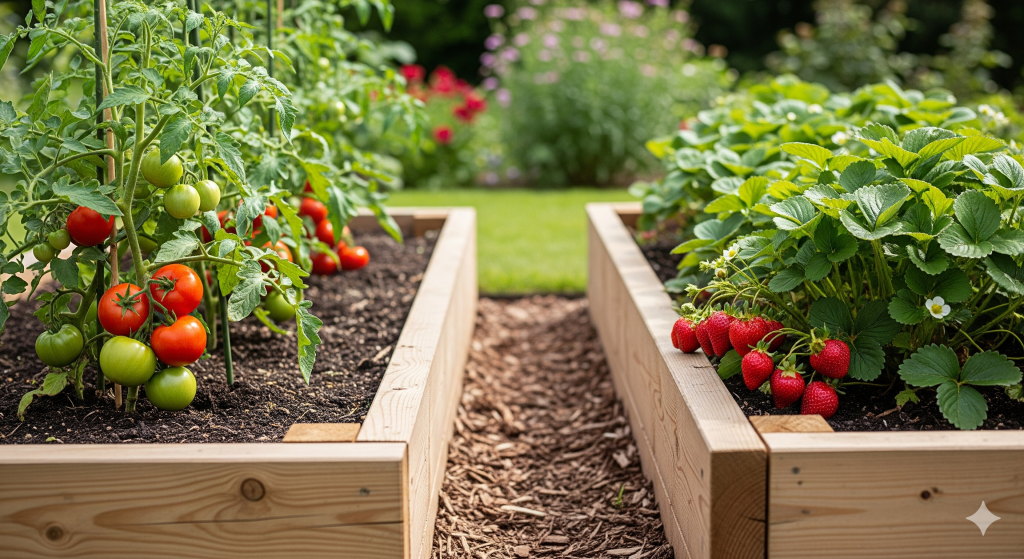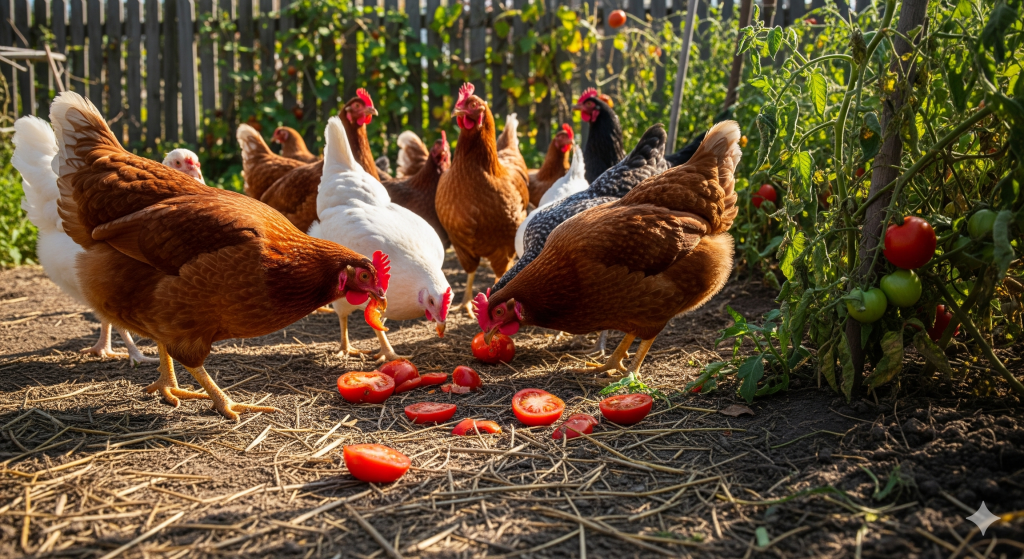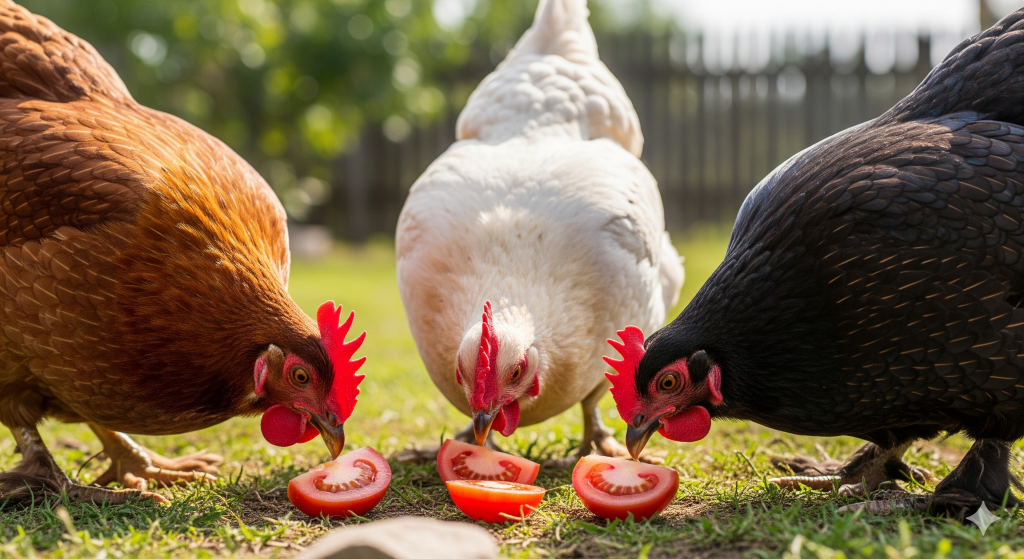Table of Contents
Companion planting is a time-honored tradition that can help you create a thriving and resilient garden. By strategically placing certain plants together, you can deter pests, attract beneficial insects, and even improve the flavor of your harvest. But not all plants make good neighbors. When it comes to two of the most beloved summer crops, strawberries and tomatoes, the question of whether they can be planted together is a common one.
The answer is a cautious yes, but it’s generally not recommended by experienced gardeners. While they can be grown in the same garden, planting them in close proximity can lead to a number of problems that can impact the health and productivity of both plants.
Can You Plant Strawberries and Tomatoes Together?
While it might be tempting to interplant these two summer favorites, there are a few key reasons why it’s best to give them their own space:
- Shared Diseases: Both strawberries and tomatoes are susceptible to a soil-borne fungal disease called Verticillium wilt. Planting them together increases the risk of this disease spreading and wiping out both of your crops.
- Nutrient Competition: Both plants are heavy feeders, meaning they require a lot of nutrients from the soil to produce a good harvest. When planted together, they will compete for these resources, which can lead to stunted growth and a smaller yield for both.
- Different Growth Habits: Tomatoes are tall, vining plants that can easily shade out the low-growing strawberries, which need full sun to produce sweet, juicy berries.
Ready to Take Your Self-Sufficiency to the Next Level?

If you love the self-sufficient lifestyle, this is the only guide you’ll ever need. Learn how to generate your own power, secure your water supply, and become truly independent. No fluff, just actionable plans.
➡️ Check out The Self-Sufficient Backyard and start your journey today!
How Far Apart to Plant Strawberries and Tomatoes
If you are determined to plant both in the same garden, it’s crucial to provide enough space to minimize the risks. A good rule of thumb is to plant them in separate beds or at least 3-4 feet apart. This will help to prevent the spread of diseases and reduce the competition for sunlight and nutrients.
What Is the Best Thing to Put Around Strawberry Plants?
Strawberries have a number of beneficial companion plants that can help them thrive. Some of the best options include:
- Borage: This herb is known to attract pollinators and predatory insects that can help to control pests.
- Bush Beans: These legumes fix nitrogen in the soil, which is beneficial for strawberries.
- Marigolds: These cheerful flowers are a powerhouse in the garden, repelling a wide range of pests, including nematodes.
- Onions and Garlic: The strong scent of these alliums can help to deter slugs and other common strawberry pests.
Bad Companion Plants for Strawberries
In addition to tomatoes, there are a few other plants that should not be planted near strawberries:
- Cabbage Family (Brassicas): Plants like broccoli, cauliflower, and kale can inhibit the growth of strawberries.
- Fennel: This herb is known to have a negative effect on the growth of many other plants, including strawberries.
- Okra: This tall plant can attract pests that also bother strawberries.
Conclusion
While it is technically possible to grow tomatoes and strawberries in the same garden, it is not an ideal pairing. The shared risk of disease and the competition for resources make it a better practice to give them their own space to thrive. By surrounding your strawberries with beneficial companion plants like borage, beans, and marigolds, and keeping them at a safe distance from tomatoes and other “unfriendly neighbors,” you can set yourself up for a successful and delicious harvest of both of these summer favorites.



